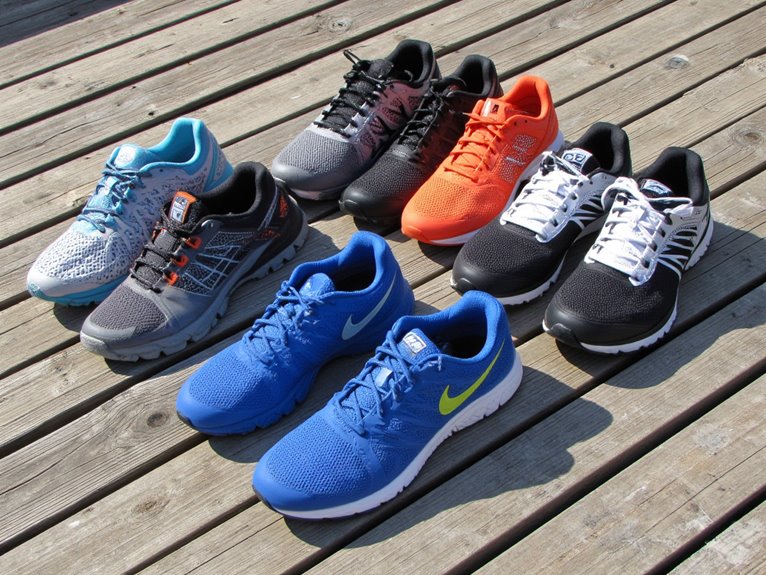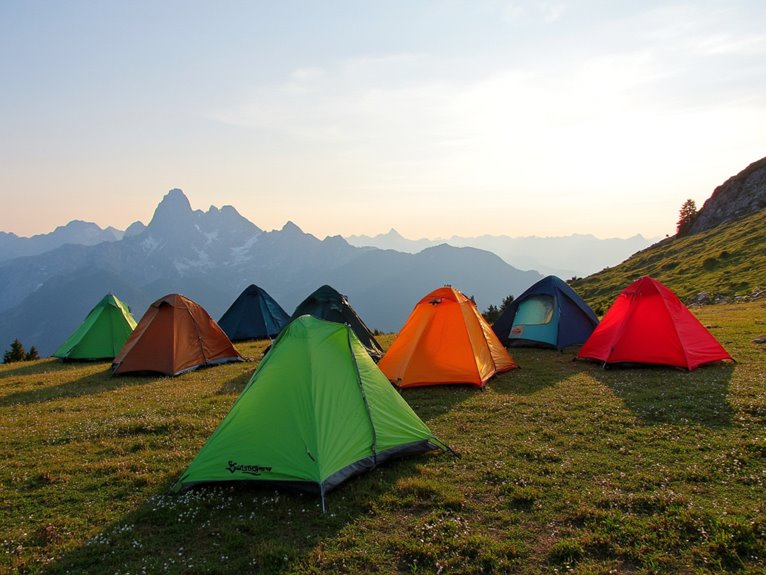Can You Hike in B1 Boots?
B1 boots are engineered for rugged outdoor adventures, making them an excellent choice for hiking in challenging terrains, provided you understand their capabilities and limitations. Designed for supportive stability and traction, they're perfect for tackling demanding trails and rocky landscapes. While they can handle improved trails with ease, venturing off-trail requires careful planning and honesty about your abilities. With features like ankle support, aggressive tread patterns, and waterproofing, B1 boots are built for the great outdoors. Now, discover how to get the most out of your boots and tackle even the toughest trails with confidence.
We are supported by our audience. When you purchase through links on our site, we may earn an affiliate commission, at no extra cost for you. Learn more. Last update on 6th January 2026 / Images from Amazon Product Advertising API.
What Are B1 Boots Designed For?
B1 boots are specifically designed for hiking and backpacking in rugged, rocky, and slippery terrain, where a high level of ankle support and protection is essential.
They're built to tackle rough landscapes, not stroll through manicured parks. Think scrambling up scree slopes, fording rivers, and traversing treacherous mountain trails.
These boots are engineered to provide superior stability, support, and traction, allowing you to tackle the most demanding trails with confidence.
With their sturdy construction and aggressive tread patterns, B1 boots are the perfect companion for adventurers who crave the thrill of exploring the great outdoors.
Hiking on Improved Trails
When hiking on improved trails, the going gets easier – and that's a good thing!
With well-maintained paths and minimal obstacles, you can focus on enjoying the scenery rather than traversing treacherous terrain.
This is where B1 boots truly shine, providing support and comfort as you take in the views and make the most of your hiking experience.
Trail Conditions Matter
Most hikers will agree that improved trails, with their smooth surfaces and gentle slopes, are a blessing for their B1 boots.
These trails are often meticulously maintained, making them an ideal choice for hikers who want to test their B1 boots.
The even terrain and lack of obstacles allow you to focus on your stride and enjoy the scenery.
However, don't get too comfortable – improved trails can still throw in some surprises, like hidden rocks or slippery surfaces.
Keep your wits about you and stay alert to potential hazards.
With the right mindset and footwear, improved trails can be a wonderful way to get some exercise and enjoy the great outdoors.
Easy on the Feet
Hiking on improved trails is a veritable treat for your feet, as the smooth surfaces and gentle slopes reduce the impact on your joints, allowing you to hike for longer periods without excessive fatigue. It's like getting a free foot massage with every step!
On these trails, you can focus on taking in the scenery instead of worrying about twisted ankles or bruised toes.
Some benefits of improved trails include:
- Wider paths that accommodate easy passing
- Regular maintenance to prevent obstacles and hazards
- Gentle inclines that reduce strain on your legs
- Clear signage that keeps you on track
With improved trails, you can enjoy the great outdoors while giving your feet a break.
Off-Trail Adventures and Limitations
Venturing off-trail in B1 boots can be a thrilling adventure, but it's essential to acknowledge the limitations that come with it.
While B1 boots are designed for rugged terrain, they're not a free pass to tackle any off-trail excursion. Steep slopes, dense vegetation, and rocky terrain can still pose significant challenges.
It's vital to assess your route and abilities honestly, recognizing when to push forward and when to turn back. Remember, it's better to err on the side of caution and live to hike another day.
With careful planning and a dash of common sense, you can enjoy off-trail adventures in B1 boots while minimizing the risk of mishaps.
Boot Features for Hiking
In tackling rugged terrain, the features of your B1 boots can make all the difference between a triumphant summit and a frustrating turnaround.
For outdoor enthusiasts, you want boots that can keep up with your adventurous spirit.
Ankle support: A sturdy ankle collar will keep your ankles stable on uneven terrain.
Tread pattern: A deep, aggressive tread pattern will grip the ground, reducing the risk of slips and falls.
Water resistance: A waterproof membrane will keep your feet dry, even in soggy conditions.
Breathability: A breathable upper will help regulate temperature, keeping your feet cool and comfortable.
In terms of hiking, boots with these features will be ready to take on any trail that comes your way.
Realistic Expectations on the Trail
When you're gearing up for a hike in your trusty B1 boots, it's essential to acknowledge the trail conditions that await you.
A realistic understanding of the terrain difficulties ahead can be the difference between a triumphant trek and a grueling slog.
Trail Conditions Matter
Hitting the trails without assessing the terrain is a recipe for disaster, so it's essential to scope out the trail conditions before lacing up your B1 boots.
You wouldn't show up to a black-tie event in flip flops, would you? In the same vein, you shouldn't hit the trails without knowing what you're getting yourself into.
Some key trail conditions to examine:
- Muddy messes: Will you be trudging through ankle-deep mud or trekking rocky terrain?
- Steep inclines: Are you prepared for heart-pumping climbs or leisurely strolls?
- River crossings: Will you need to ford icy rivers or skip across stepping stones?
- Weather warnings: Are you prepared for scorching sun, torrential rain, or even snow?
Terrain Difficulties Ahead
Trekking through uncharted territories demands a clear-eyed assessment of the terrain difficulties that lie ahead, lest you find yourself stuck in a ravine or clinging to a precarious ledge for dear life.
When hiking in B1 boots, it's essential to acknowledge the challenges posed by steep inclines, rocky outcroppings, and fast-flowing streams.
Be prepared for uneven terrain, which can test your balance and agility.
Don't underestimate the obstacles posed by dense vegetation, fallen trees, and slippery surfaces.
By acknowledging these potential hurdles, you can plan your route, pace yourself, and adjust your footwear accordingly.
Remember, B1 boots are designed for rugged terrain, but they're not a magic solution.
Stay alert, stay prepared, and you'll conquer even the toughest trails.
Are B1 Boots Right for You
The perfect pairing of boot and hiker is a harmonious marriage of form and function, where the right B1 boots can elevate your hiking experience, but only if you're willing to take the time to determine if they're truly the best fit for your unique needs and preferences.
Before investing in a pair, ask yourself:
Are you a beginner or seasoned hiker? B1 boots might be too aggressive for newbies.
Do you prioritize ankle support or flexibility? B1 boots offer more of the former.
Are you hiking in dry or wet conditions? B1 boots excel in dry terrain.
Do you have foot issues or orthotics? B1 boots might not accommodate your needs.



